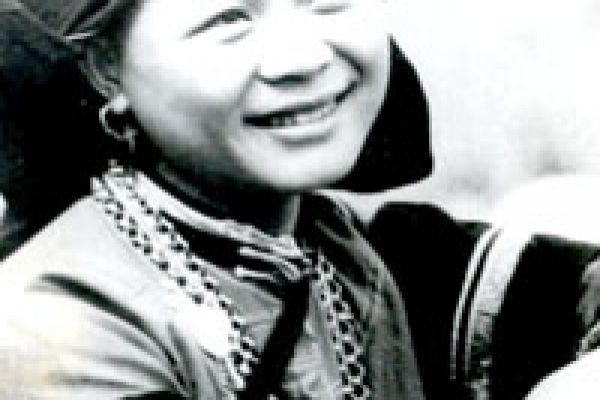
Proper name: Bo Y
Other names: Chung Cha, Trong Gia.
Population: 1,420 people
Local groups: Bo Y and Tu Di
Language: The Bo Y group speaks Tay-Thai language (which belongs to the Tai-Kadai language family while the Tu Different speak Han or Chinese language family).
History: The first Bo Y people traveled south to Vietnam from China about 150 years ago.
Production activities: The Bo Y people were originally experienced in wet rice cultivation. However, since settling in the northern mountainous regions of Vietnam, they have had to rely mainly on slash-and-burn agriculture-primarily growing corn, their main crop. In addition, each family usually has a vegetable garden. Apart from raising livestock and poultry, the local people are also involved in various crafts such as cloth weaving, black-smithing, pottery-making, stone carving, silver engraving, plaiting and woodwork, etc.
Clothing: Formerly, Bo Y women wore full skirts like those worn by Hmong, or ornamented with batik bee’s wax designs and dyed indigo. The blouse is short, often having five panels with a bodice covering the chest and abdomen. Silver ornaments are popular, such as necklaces, wrist chains and ear-rings. The women wear their hair wound in a chignon at the top of their head. Their headgear is traditionally an indigo turban which or ornamented with colorful embroidery. Nowadays, some Bo Y people have adopted the neighboring Nung’s way of dressing. Some also wear shirts lie the Han but with removable sleeves.
Lifestyle: The Bo Y live in Quan Ba (Ha Giang province) and Muong Khuong (Lao Cai). They live in houses built on the ground with a thatched, wooden or tiled roof and clay walls. The house usually has three sections, with an extra bay for the unmarried boys or used as a rice granary.
Social organization: The society’s social classes are clearly defined. The upper classes consisted of the village chief (known as Pin Thau) and his assistant (Xeo Phai)
Marriage: There are three steps involved to organise a Bo Y wedding:
Step 1: The boy’s family sends two female matchmakers to ask the girl’s family for her personal information, date of birth, so tht match-making calculations can be made. The girl’s family, in return, often shows their good-will by offering the guests 10 red colored chicken eggs. If the boy’s family finds that the couple is well-matched, then they will again send two matchmakers-this time male to read the horoscope of the girl and to consult the girl’s family on the price for an engagement ceremony.
Step 2: After the engagement ceremony, the marriage is agreed by the boy’s and the girl’s families.
Step3: The wedding. The bride-groom’s family presents the wedding presents to the bride’s family. Apart from food, some clothes for the bride are also included. The bridegroom does not go to the bride’s house; instead, the bride rides on a horse to the bridegroom, attended by the bridegroom’s sister who walks alongside. She brings with her a pair of scissors and a small hen, which she will release to the forest at mid-way.
Birth: In the past, according to local customs, the women often sit when they deliver. They cut the baby’s umbilical cord with a bamboo knife and the placenta is often buried right under the bed. Three days later, a ceremony is held for the goddess, believed to be the creator and protector of the baby, and also to nickname the baby. Only when the child reaches two or a tree year is he or she given an official name. It a child is ailing all the year round, a foster father will be chosen so that the child’s spirit has a place to rest.
Funerals: Funerals reflects the sentiments of the living towards the dead, which, according to Bo Y beliefs, will take the deceased’s sprit back to his or her country land. Four rifle shots are fired before the funeral, and the deceased’s feet should go first as the coffin is carried to the grave yard. Between the deceased’s home and the grave yard, three stops are made (if the deceased’s wife or husband is still living) or four (if both have died). Mourning is maintained by the family members for three years, during which time, the men are not allowed to drink wine, the women can not wear ornaments, and boys and girls are not allowed to get married.
Beliefs: Three incense bowls are placed on the altar, which is dedicated to heaven, to the spirit of the heart, and to ancestors. Under the altar, three is an incense bowl dedicated for worshiping the land’s god. If the wife’s parents both died without a son, the son-in-law is responsible for setting up a small altar in the doorway.
Festivals: There are many Tet occasions celebrated by the Bo Y, such as Nguyen Dan (Lunar New Year), Ram Thang Gieng (mid-lunar-January festival), 30th of Lunar January festival, Han Thuc, Doan Ngo, 6th of Lunar June, mid-Lunar-July and New Rice festival, in particular, is held on the 8th or 9th day of Lunar September, featuring the square sticky rice cake, chay cake and colored steamed rice.
Calendar: The Bo Y calculate the date based on the lunar calendar.
Education: In the past, some Bo Y people still used Chinese for writing their family annals, their ritual texts, and their destiny accounts sheet.
Artistic activities: In the Tu Di group, the youth often take part in exchanging songs sung at the beginning of the spring marketplaces or at their homes. Most songs are in Chinese, accompanied by ken la, a wind musical instrument made of leaves.
Games: On special occasions, the Bo Y play folk games with swings, Chinese chess, spinning top, and khang playing.
(84-63) 3 826042 – (84-63) 3 511142
No 54 Nguyen Dinh Chieu, Ham Tien Central Mui Ne Beach Binh Thuan Vietnam
523 To Hien Thanh District 10 Ho Chi Minh City Vietnam
Ha Long Halong City Quang Ninh Vietnam
A13 Hung Thong 2 Halong City Quang Ninh Vietnam




